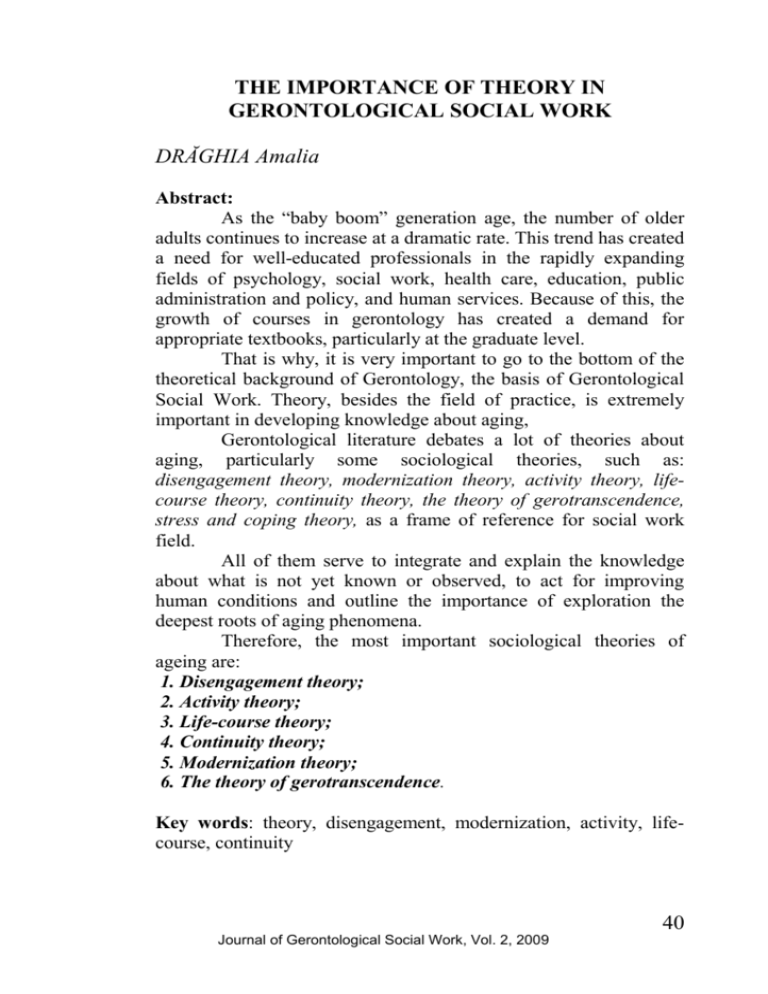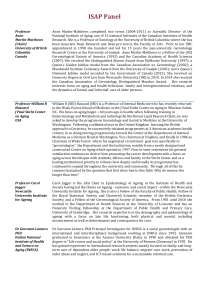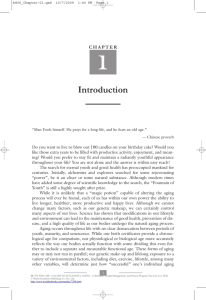40 THE IMPORTA CE OF THEORY I GERO TOLOGICAL SOCIAL
advertisement

THE IMPORTACE OF THEORY I GEROTOLOGICAL SOCIAL WORK DRĂGHIA Amalia Abstract: As the “baby boom” generation age, the number of older adults continues to increase at a dramatic rate. This trend has created a need for well-educated professionals in the rapidly expanding fields of psychology, social work, health care, education, public administration and policy, and human services. Because of this, the growth of courses in gerontology has created a demand for appropriate textbooks, particularly at the graduate level. That is why, it is very important to go to the bottom of the theoretical background of Gerontology, the basis of Gerontological Social Work. Theory, besides the field of practice, is extremely important in developing knowledge about aging, Gerontological literature debates a lot of theories about aging, particularly some sociological theories, such as: disengagement theory, modernization theory, activity theory, lifecourse theory, continuity theory, the theory of gerotranscendence, stress and coping theory, as a frame of reference for social work field. All of them serve to integrate and explain the knowledge about what is not yet known or observed, to act for improving human conditions and outline the importance of exploration the deepest roots of aging phenomena. Therefore, the most important sociological theories of ageing are: 1. Disengagement theory; 2. Activity theory; 3. Life-course theory; 4. Continuity theory; 5. Modernization theory; 6. The theory of gerotranscendence. Key words: theory, disengagement, modernization, activity, lifecourse, continuity Journal of Gerontological Social Work, Vol. 2, 2009 40 1. Disengagement Theory This is the first formal theory that attempted to explain the process of growing older, proposed in 1961 by Elaine Cumming and William Henry (argued that normal aging involves a natural and inevitable mutual withdrawal or disengagement; older person and society mutually disengage from each other). The elderly people are less involved with life than they were as younger adults (the relationship between personal and social aging) and this withdrawal from society may be initiated by the aging person or by society, and may be partial or total. Society forces withdrawal on older people whether or not they want it. Therefore, the elderly people experience greater distance from society and they develop new types of relationships with society. In this way, there is created an inevitable process in which many of the relationships between a person and other members of society are severed and those remaining are altered in quality. 2. Activity theory This theory emphasizes the importance of ongoing social activity and outlines that a person's self-concept is related to the roles held by that person (retiring may not be so harmful if the person actively maintains other roles, such as familial roles, recreational one, volunteer and community roles). That is why, in order to maintain a positive self-esteem, the person must substitutes new roles for those that are lost because of age. Important studies show that the type of activity does matter, just as it does with younger people. 3. Life-course Theory Life-course Theory represents a more formal elaboration of activity theory, using a life-course perspective to define normal aging, when aging begins and what it involves. Aging, as part of the total human life course, from birth to death, involves biologic, psychological and sociologic processes. Experiences during aging are shaped by individual-personal historical factors. This theory underlines the need of understanding life history and the markers of the passage through life and emphasizes that the individual personality plays a major role in adjustment to aging and that adult development is a continuous process. Thereby, the adjustment to the new life experiences and human conditions are imperative! Journal of Gerontological Social Work, Vol. 2, 2009 41 4. Continuity Theory This theory explains how people adapt to their own aging and states that the elderly try to preserve and maintain internal and external structures by using strategies that maintain in this way the continuity (older people may seek to use familiar strategies in familiar areas of their life). In later life, adults tend to use continuity as an adaptive strategy to deal with changes that occur during normal aging. These changes come about as a result of the aging person's reflecting upon past experience and setting goals for the future. 5. Modernization Theory Modernization Theory refers to the status of the elder, which gets declined as society moderns and the industrialization age has substantially decreased it. The transformation of society from simple to a complex one, the use of energy, the use of technology, the importance of the new, and the importance of education have led to a lower and lower esteem for the elderly. In this context, lifelong experience gathered through the work is devalued ( the most appreciated is the new education), and, there is created a good way for competition: the elderly, rich with their lifelong experience and sagacity versus well-educated persons, rich with information, gathered through high level schools. 6. The theory of gerotranscendence This theory focuses on two important aspects: the old person and the ageing process itself, describing both the experience of growing old and the characteristics of a normal and positive old age. The aging phenomenon does not imply any state of withdrawal or disengagement, as sometimes erroneously believed. In this period of life, a redefinition of the Self and of relationships to others happens, as well as a new understanding of fundamental existential questions, representing the final stage in a possible natural progression towards maturation and wisdom. The elder person is a less self occupied one and at the same time more selective in the choice of social and other activities, getting an increased feeling of affinity with past generations and a decreased interest in superfluous social interaction. Journal of Gerontological Social Work, Vol. 2, 2009 42 On the other hand, there is a decreased interest in material things and a greater need for solitary "meditation" and in the end, the “positive solitude” becomes more important. All of these theories serve to integrate and explain the knowledge about what is not yet known or observed, to act for improving human conditions and outline the importance of exploration the deepest “roots” of aging phenomenon. Social gerontologists face the task of explaining how the process unfolds as well as how the decisions take on the salience they do; neither are as transparent as they may at first appear. The quest for theories helps us make sense of what happens to people as they age is worthwhile. Bibliography • • • • Cumming, E. (1961). Growing Old: The Process of Disengagement, New York, Basic Books. Baltes P.B., Smith J. (1999). Multilevel and systemic analyses of old age: theoretical and empirical evidence for a fourth age. In: Bengtson V L, Schaie K W (eds.) Handbook of Theories of Aging. Springer, New York, pp. 153-173 Bengtson, V.L; Rice, C.J. ; Johnson, M.L. (1999). Are theories of agingimportant? Models and explanation in gerontology at the turn of the century. In: Bengtson V L, SchaieK W(eds.) Handbook of Theories of Aging. Springer, New York, pp. 3-20 Baltes, M.M; Carstensen, L.L. (1999). Socialpsychological theories and their application to aging: from individual to collective. In: Bengtson V L, Schaie K W(eds.) Handbook of Theories of Aging. Springer, New York, pp. 209-226. Journal of Gerontological Social Work, Vol. 2, 2009 43





